How to successfully manage knowledge. Technical writers as knowledge managers
This article gives an introduction to knowledge management. The target readers are technical writers as I prepared this summary for a technical writing conference. However, others may hopefully also find it useful.
Why manage knowledge?
The percentage of employees working in manufacturing has steadily decreased in the last decades. Today, 80 % of the European employees work in the service industry. Many employees provide services that require special knowledge. Without this special knowledge, the services could not be offered or maintained. People’s knowledge has become an asset that decides if a business succeeds or fails, because knowledge creates unique selling points. Today, knowledge is a central strategic resource for developing and marketing products and services. Knowledge management has become an essential competitive factor for many companies.
Hunting for information
At work, we are flooded with information. There are team meetings, e-mails, newsletters. There are texts and phone calls. There is the company wiki, the intranet, and the Internet. Still, there often is this one piece of information that we urgently need to accomplish a task. But we cannot get it fast because, sometimes, our piece of information resides with others. Or it is unavailable for other reasons:
- It is special knowledge and only used occasionally.
- It resides with specialists, with people in other business units or with external people.
- Knowledge about processes and company procedures is not written down.
- Knowledge about projects, customers, suppliers is not easily accessible.
- There is no place to register and look up ideas.
Knowledge is valuable
Your organization’s knowledge is an asset – and as any other asset, it needs to be developed, evaluated, and enhanced. It needs to be actively managed. The success of a company largely depends on how much better it manages its knowledge than the competition.
But what exactly does it mean to manage knowledge? Do we have to write down everything we know and archive it? That would be information management only. Do we need to train people better? Well, training is important. But if we focus on training only, we build up knowledge, but do not manage it.
Knowledge management means to combine different tools and methods – according to the requirements and conditions of your organization. This brings us to the following definition of knowledge management:
"Knowledge management is a discipline that promotes an integrated approach to identifying, capturing, evaluating, retrieving, and sharing all of an enterprise's information assets. These assets may include databases, documents, policies, procedures, and previously un-captured expertise and experience in individual workers." (Duhon, 1998)1
Why do technical writers make good knowledge managers?
Technical writers are well equipped for becoming good knowledge managers:
- Technical documentation is knowledge. It describes how to use a product in the correct way. Technical writers generate that knowledge. They are knowledge workers.
- Technical writers work in an interdisciplinary way. They exchange information with different units in an organization: Marketing, Sales, R&D, Support, or Product Management. Knowledge management also is an interdisciplinary field: It needs to be applied across groups, throughout the organization.
- Technical writers know methods for structured and user-oriented writing and for categorizing and indexing content. They know how to capture knowledge so that readers can easily understand and directly apply it.
- Technical writers are good at working in IT systems. They can define requirements and evaluate IT systems. Each knowledge management system usually involves one or more IT systems in which the knowledge is stored and categorized.
How to implement knowledge management
All organizations engage in knowledge management, even though they may not call it that. No organization could function without sharing knowledge. But each organization carries its own, special knowledge, and how it manages it, depends on the type and quantity and where the knowledge resides.
Before you start your knowledge management project, find out how your organization currently builds, stores, and exchanges knowledge. When you have found the methods, you can evaluate them: Are they sustainable and future-proof? Can you use them in your knowledge management project? Also consider that knowledge management follows a holistic approach with three important elements that interact with each other: technology, organization, and people.
People: They are the most important element as they carry the knowledge. All you need to do is give them the tools and structures for managing their knowledge. The three elements always work together. If one is missing, your knowledge management project will fail. For example, an IT system alone does not mean that you have introduced knowledge management. You also need to create the required organizational structures and allow your staff to use both the structure and the IT system.
Organization: This refers to the way you integrate knowledge management in your corporate structures and processes. It also includes the goals you want to achieve with knowledge management and the methods you select to introduce it.
Technology: This element includes the technical tools for your knowledge management. You can use tools that already exist in your organization, such as information and communication systems. Or you decide to introduce a new system, for example, a knowledge database.
To implement knowledge management in your organization, we recommend that you follow the following steps:
- Analyze the initial situation.
- Define your goals.
- Select and apply the tools and methods.
- Assess your knowledge management project.
1. Analyze the initial situation
A good way of analyzing your initial situation is to evaluate your organization’s business processes with respect to knowledge management. An established approach is the Fraunhofer Prowis method. For this method, templates and instructions are available free of charge (unfortunately only in German). The analysis consists of the following steps. We recommend that you perform steps B to E in a workshop together with selected employees who work with this business process.
A. Select business processes. A business process for project-based work can consist, for example, of acquisition, quotation, kickoff, execution, completing, and controlling.
If your organization has not yet modelled its business processes, you can use simple workflow diagrams, swim lane diagrams or BPMN diagrams.
B. Define the areas of knowledge. Identify the areas of knowledge that are required for the individual steps within the business process. The areas may include:
- Expert knowledge, domain knowledge
- Knowledge about the organization’s processes
- Knowledge about the customers
- Knowledge about the IT systems used
- Knowledge about partners
- Knowledge about competitors
C. Identify the knowledge carriers for each step in the process. Knowledge carriers can be people, databases, documents, IT systems, or templates. Example: For creating quotes, your organization needs document templates that are stable and easy to update. These templates are stored on the file server, but people usually use the latest quote as a template. Possible reasons: The file server cannot be accessed by everyone. The folder structure is confusing.
D. For each business process, assess knowledge management along the circle of knowledge for the areas. In this step, let the employees assess how knowledge is generated, stored, distributed, and applied. You can use traffic lights for the assessment.
For our example, the quotation with a project management process, the assessment may look as follows:
- Generate knowledge: When new product managers are trained, they learn how to create quotes. Experienced employees double-check these quotes and provide feedback. The management double-checks all quotations. The traffic light turns green.
- Store knowledge: We have central templates for quotations on the file server, but we do not always know how to fill in the individual sections and which template to use. This is especially critical for occasional users. A knowledge article with some reference information would be nice. The traffic light turns yellow.
- Distribute knowledge: The templates are not well distributed, as not all people can access the file server where the templates are stored. Also, there is no notification when the template changes (and why it was changed). The traffic light turns red.
- Apply knowledge: Because the quotes are double-checked, knowledge is applied. The traffic light turns green.
E. Collect ideas. What can we improve regarding the generation, storage, distribution, and application of knowledge for this business process and the affected areas of knowledge?
F. Derive measures. Let's say you provide work instruction for quotations in the company wiki with links to the centrally stored templates. Whenever you update these templates, notifications must be sent to the responsible employees. You also have to enable access to the templates to all project managers.
It is up to you how many business processes you include in your analysis. You can start with the critical processes. At the end of your analysis, you will have a clear image of the knowledge areas that need to be improved and also of the gaps in your knowledge management.
2. Define your goals
The next step is to define the goals you want to achieve with your knowledge management project. We distinguish between three types of knowledge goals: normative, strategic, and operational.
Normative goals are based on what is considered the correct way of conducting your business. They include the long-term vision you have for your organization. Knowledge management should be part of the normative goals, because it requires long-term commitment. The following is the knowledge management state of the World Bank:
Strategic goals define the long-term programs for reaching your vision. They describe the future knowledge areas of your organization and the business areas that you want to strengthen with knowledge management.
Examples:
- By 2020, we are the leading experts for IT documentation in Europe.
- By 2030, we extend our skills in Ruby on Rails so that we do not have to rely on external experts any longer.
Operational goals ensure that you reach your strategic goals and describe actual activities.
Examples:
- Our DITA experts create a knowledge base with DITA tutorials and write four knowledge base articles each year.
- After each project, we do a retrospective and check the experiences we made in the project against our list of standard project risks.
- We train two people in Ruby on Rails.
The In and Out list
We also encourage you to think about what you do not want to achieve. One way of doing that is to create a list with two columns: In and Out. In In, you write down your project goals. Use the Out column to exclude goals. This way, you can make sure that your goals are not so unrealistic that they will disappoint people if not reached.
3. Select and apply the tools and methods
Which tool and methods you use for implementing knowledge management depends on your requirements, goals and – last, but not least – your staff. The tools and methods must fit your organization and your knowledge management strategy: codification or personalization.
But before you select your tools and methods, you should decide which strategy you want to follow: There are two different strategies in knowledge management. You can focus on one of them or apply a mixture of both:
Codification strategy: If your business includes many similar, repeating standard tasks, your knowledge management strategy should focus on storing knowledge in procedures and templates. An example for an organization that can focus on a codification strategy, is a Call Center where people follow fixed workflows and procedures.
The goal of codification is the re-use of knowledge. The underlying idea is to extract the knowledge from people and store it. This approach is especially used by process-driven companies, which focus on documentation.4
Personalization strategy: If your employees perform many different and complex tasks and mostly work in teams, you should follow the personalization strategy. A software consultant company, for example, focusses on this strategy.
The focus of personalization is on people and their direct communication. For companies with flat organizational structures, the internal communication often is very important. These companies encourage their employees to exchange ideas and experiences. Thus, the employees continuously build up and improve their social network within the organization, which they utilize to localize desired knowledge or experts in the case of need (goal-oriented).5
We cannot describe all possible methods and tools that are available. But we have tried to make a good selection. We explain the selected methods along the circle of knowledge.
Generate knowledge
Generating knowledge means creating tacit knowledge. Selected methods are:
Action-based learning: This method is based on learning by action and helps people to better solve problems. People take action and reflect upon the results. The knowledge they gain improves the problem-solving process and the solutions they develop. For example, “learning projects” have business value for the company, but are not direct customer projects.
- Mentorship: A mentor supports new employees in the first months of their new job. The mentorship can include a training plan (see example in image below), retrospectives, feedback meetings, reviews, etc.
- Knowledge tandems: In a tandem, two people with different backgrounds and experiences or from different groups work together on specific tasks. This way, they can share their knowledge and learn from each other.
- Knowledge transfer: Expert and beginner exchange knowledge in a specific field. They can transfer knowledge in a formal way, for example, through interviews, documents, and coaching. The transfer may be supplemented by more informal methods, such as podcasts. Knowledge transfers are especially important when employees leave the organization and need to pass their knowledge to their successors.
Store knowledge
Knowledge databases: Organizations collect knowledge in databases. Knowledge databases can be different systems, such as intranets, document management systems, or wikis. A knowledge database can contain different kinds of content, such as standard operating procedures, work instructions, templates, project information, customer details, or tools.
If you decide to capture knowledge in articles and thus create explicit knowledge, consider the following:
- Keep articles short. People do not like to read long texts.
- Make graphical representations attractive.
- Make information easy to find.
- Eliminate outdated information.
- Control access rights to the knowledge database.
- Make the purpose of each information clear – why should I read this?
- Create a central point of access to the information.
- Create consistent quality and structure for all knowledge articles.
- Remember: good writing takes time.
If you consider using a wiki as knowledge database, you can choose from a wide range of open-source and commercial solutions. Examples are the Wikipedia software MediaWiki and Confluence by Atlassian.
Directory of experts: Your employees use this directory to find experts in a particular subject. The directories can be implemented in many IT systems, for example, in Sharepoint, a web content management system, or in a wiki.
Standardized templates, procedures, process descriptions: Storing knowledge also means developing templates and defining standard operating procedures, process descriptions, and work instructions. They ensure that your employees always follow the same procedures. For documenting processes, you can use special process model tools, such as ARIS or ADONIS. Modeling is also possible in wikis, for example with BPMN plugins. Examples are the Signavio plugin and the yworks plugin for Confluence.
Distribute knowledge
Your knowledge management project can only succeed if your employees find and share the knowledge. You can use several methods for distributing knowledge:
- Subscriptions: They keep your employees always up-to-date. RSS feeds inform about new articles in the knowledge database, latest product edits and updates, or what is new in the knowledge base. Employees can watch pages, receive news, follow discussions in the forum, and so on.
- Retrospectives, lessons-learned: Each project brings new insights and findings. You can use retrospectives to document the learned lessons and share the results with other or future project teams.
- Meeting culture: Separate the administrative meetings from project meetings and knowledge meetings. Make sure that you only invite the required team members to a meeting.
- Know-how lunch: At a lunch meeting for which the company pays, one of your employees introduces a new tool, a procedure, or a project.
- Lunch carousel: A great way to improve the relationship between staff members or departments. How it works: Two members of different departments have lunch together. They can share knowledge, correct misunderstandings, and ease tensions between the departments.
- Communities of practice and corporate social networks: In knowledge networks, employees can share information about a subject even though they work in different locations.
- Personal profile pages: These pages can be set up for employees in project management systems or wikis. In addition to contact information, employees can present their skills and knowledge or any other information that might be interesting (hobbies, affiliations, preferences, etc.) Profile pages are possible for Sharepoint and ActiveDirectory, for example. Important: Existing user directory and access systems must be integrated.
Apply knowledge
You only create knowledge when you apply what you learned. The organization needs to provide the methods for it. For example:
- Teamwork: Working in a team makes it easier for your employees to share and apply knowledge.
- Job rotation: If possible, employees can take turns in working on different projects or in different groups.
- Make the application of best practices and lessons learned part of the standard workflows.
Unlearn knowledge
Think of your knowledge database as a garden. In the spring, you sow the seed, that is, you fill your database with information and you encourage your staff to do the same. During the summer months, your garden grows. Your knowledge is blossoming. But like in any other garden, there is weed, in this case unnecessary or outdated information. That means you need to employ a knowledge gardener who weeds your database and keeps the information updated.
- Adapt the work instructions and process descriptions when ways of working change
- Update templates
- Keep your method framework up-to-date
- Update your knowledge at conferences or by training
The individual mixture
Which of above methods you use, depends on the requirements of your organization. Usually, you will need a mixture of methods. Make sure though that your methods apply to the three knowledge management categories: technology, organization, and people.
Technology
- Select one or more suitable IT systems and make sure that they do not overlap.
- Set up a knowledge portal, which shows the central, important corporate processes, for example, standard operation procedures, tasks, and projects, but also interesting stuff (what’s for lunch today).
- Facilitate communication between users.
- Make your knowledge portal easy to use.
Organization
- Standardize corporate processes, but keep them flexible and changeable at the same time.
- Invest time and money to facilitate communication between employees.
- Make time for knowledge management and make it a regular activity.
- Assign a knowledge manager.
- Place your knowledge manager correctly in the organizational chart. The knowledge manager should have an interdisciplinary position, directly coordinating with management. A knowledge manager should not belong to the IT department.
- Integrate knowledge management into your business processes.
People
- Technology must serve people, not the other way around.
- Train people.
- Facilitate cooperation and relations across organizational borders.
- Encourage your employees to share their knowledge.
- Make knowledge management part of the employees' personal goals. Create incentives.
- Make sure that managers engage in knowledge management, too.
- Let the data protection officer and staff council participate.
4. Assess your knowledge management project
After you have implemented knowledge management in your organization, we recommend that you evaluate the success of the project as soon as possible. One way of doing it is to create an intellectual capital report.
The research group "Arbeitskreis Wissensbilanz" of the German Fraunhofer Institute for Production Systems and Design Technology promotes the scientific development and broad application of Intellectual Capital Statements as a strategic management tool. It helps organizations understand, collect, evaluate, and develop their intellectual capital systematically. Unfortunately, the majority of information on intellectual capital reporting in Germany and the activities of the research group "Arbeitskreis Wissensbilanz" had not been translated into English yet.
What we win with knowledge management
Organizations that successfully manage their knowledge work more efficiently. They minimize risks and gain time for innovations. They become more competitive. Their employees are happier and more motivated. There are fewer e-mails and less coordination effort. Managing knowledge is worth the effort. Knowledge management also opens up an entire new field of expertise for technical writers.
The following presentation was given at the UA Writers conference 2015 in Southampton, UK.
Footnotes
- http://management.simplicable.com/management/new/10-knowledge-management-definitions
- http://www.bpmn.org/
- The website of the Fraunhofer society provides a very useful toolbox (in German): http://www.prowis.net/prowis/ .
- http://studies.k-jahn.de/2013/01/12/knowledge-management-strategies/
- Wikipedia: "Tacit knowledge (as opposed to formal, codified or explicit knowledge) is the kind of knowledge that is difficult to transfer to another person by means of writing it down or verbalizing it. For example, stating to someone that London is in the United Kingdom is a piece of explicit knowledge that can be written down, transmitted, and understood by a recipient. However, the ability to speak a language, knead dough, use algebra,[1] or design and use complex equipment requires all sorts of knowledge that is not always known explicitly, even by expert practitioners, and which is difficult or impossible to explicitly transfer to other users.While tacit knowledge appears to be simple, it has far-reaching consequences and is not widely understood."
- See also: https://en.wikipedia.org/wiki/Action_learning
- Wikipedia: "Explicit knowledge is knowledge that can be readily articulated, codified, accessed and verbalized.[1] It can be easily transmitted to others. Most forms of explicit knowledge can be stored in certain media. The information contained in encyclopedias and textbooks are good examples of explicit knowledge."
- http://www.signavio.com/
- https://www.yworks.com/de/products_diagramsforconfluence_features.html
Sources:
- 10 Knowledge Management Definitions, http://management.simplicable.com/management/new/10-knowledge-management-definitions, download 28-09-2015
- Blick, M.: Personalisierung, Enzyklopädie der Wirtschaftsinformatik, Online-Lexikon, https://wi-lex.de/index.php/lexikon/informations-daten-und-wissensmanagement/wissensmanagement/wissensmanagement-strategien-des/personalisierung/, download 23-09-2022
- Bundesministerium für Wirtschaft und Technologie: Fit für den Wissenswettbewerb. Wissensmanagement in KMU erfolgreich einführen, Berlin, 2013
- Bundesministerium für Wirtschaft und Technologie: Wissensbilanz – Made in Germany, Leitfaden 2.0 zur Erstellung einer Wissensbilanz, Berlin, 2013
- CEN/ISSS: Europäischer Leitfaden zur erfolgreichen Praxis im Wissensmanagement, Brüssel, 2004, S. 10
- Dalkir, Kimiz: Knowledge Management in Theory and Practice. Massachusetts Institute of Technology, 2011 Davenport, Thomas H. (1994), Saving IT's Soul: Human Centered Information Management. Harvard Business Review, March-April, 72 (2)pp. 119-131.
- Directory of Experts. University of Essex: http://www.essex.ac.uk
- Duhon, Bryant (1998), It's All in our Heads. Inform, September, 12 (8).
- Eurostat, OECD STAN and National Bureau of Statistics China, www.oecd.org, download 14-03-2014
- Example Management Visions, www.nickmilton.com/2011/12/15-example-knowledge-management-visions.html, download 08-10-2015.
- Fraunhofer: ProWis, Fitness Check, http://www.prowis.net/prowis/?q=content/fitness-check, download 14-03-2014
- Fraunhofer: ProWis, Wissensmanagement-Analysemethoden, http://www.prowis.net/prowis/?q=analyseinstrumente, download 14-03-2014
- Frost, Jetta: Fallstudie II. Wissen und Intellektuelles bei Skania. 2. Universität Zürich, Institut für betriebswirtschaftliche Forschung, 2000, S. 1
- Gerhards, S., Trauner, B. (2010): Wissensmanagement. Hanser Pocket Power
- Knowledgment strategies: http://studies.k-jahn.de/2013/01/12/knowledge-management-strategies/, download 08-10-2015
- Linde, F.: Wissensmanagement: Ziele, Strategien, Instrumente, in Müller-Christ, G., Hülsmann, M. (Hrsg.), Modernisierung des Managements, Festschrift für Andreas Remer zum 60. Geburtstag, Wiesbaden 2004, S. 301 – 342
- Mörl, S., Heiss, M, Richter, A.: Siemens: Wissensvernetzung mit TechnoWeb 2.0, Schriftenreihe zu Enterprise 2.0-Fallstudien Nr. 09, in: Back A. et al (Hrsg.) München/St. Gallen/Koblenz/Frankfurt, 2011
- Pawlowsky, P., Gözalan, A., Schmid, S. : Wettbewerbsfaktor Wissen: Managementpraxis von Wissen und Intellectual Capital in Deutschland, Technische Universität Chemnitz, FOKUS prints 08/11
- Probst, G.; Raub, S.; Romhardt, K.: Wissen managen, FAZ/Gabler, Wiesbaden und NZZ/Gabler, Zürich, 2010
- Rollett, Herwig: Knowledge Management: Processes and Technologies. Springer Science & Business Media, 31.03.2003
- TechSphere. Die Informationsplattform für Management, Strategien und Konzepte: Konzepte des Wissensmanagements, http://www.techsphere.de/pageID=wm04.html, download 14-03-2014
- Vision of the World Bank, https://www.worldbank.org/en/who-we-are, download 23-09-2022
- Wikipedia: Action learning, https://en.wikipedia.org/wiki/Action_learning, download 28-09-2015
- Wikipedia: Business Process Model and Notiation, http://de.wikipedia.org/wiki/Business_Process_Model_and_Notation, Download 14.3.2014
- Wikipedia: Knowledge transfer, https://en.wikipedia.org/wiki/Knowledge_transfer, download 28-09-2015
- Wikipedia: Tacit Knowledge, https://en.wikipedia.org/wiki/Tacit_knowledge, download 28-09-2015
- Wikipedia: Explicit Knowledge, https://en.wikipedia.org/wiki/Explicit_knowledge, download 28-09-2015
- Wirtschaftskammer Österreich: Wissensmanagement für KMU, Wien, 2009/2010, S. 8
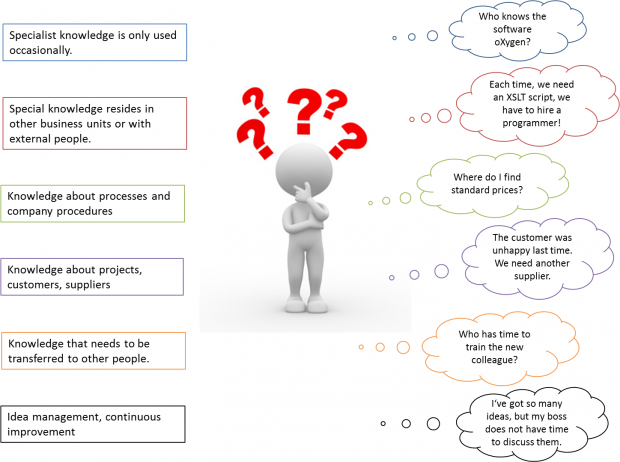
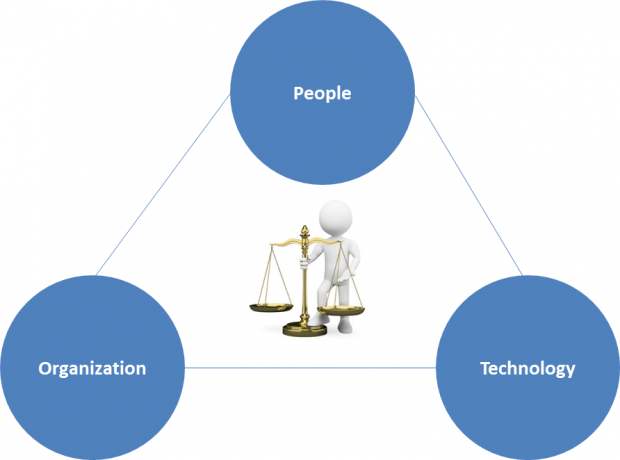

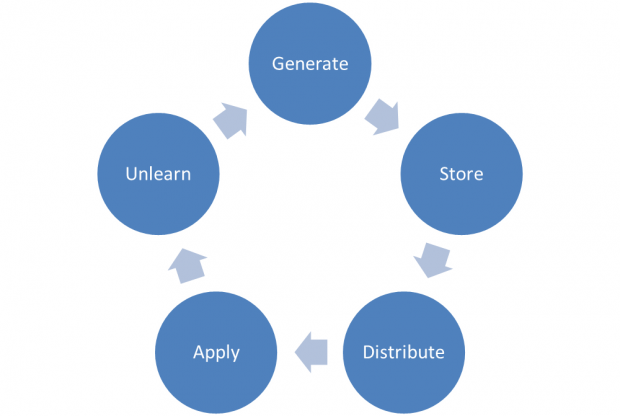
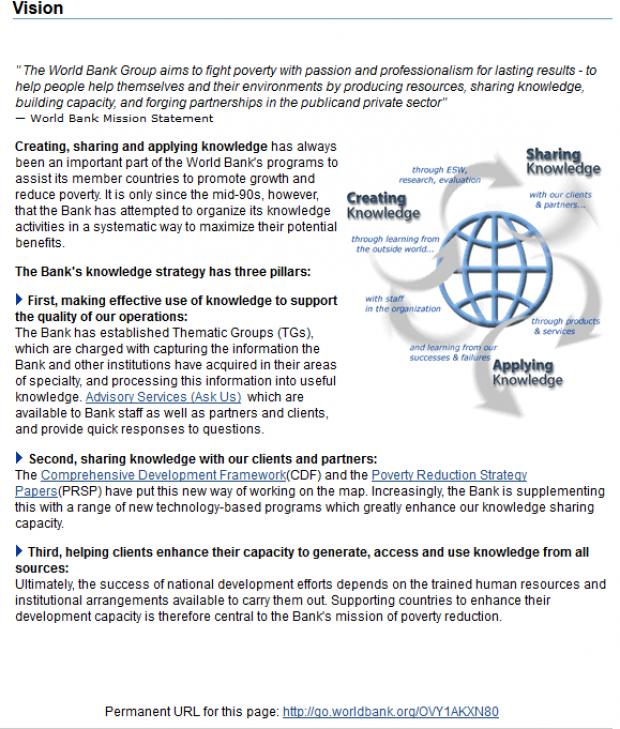
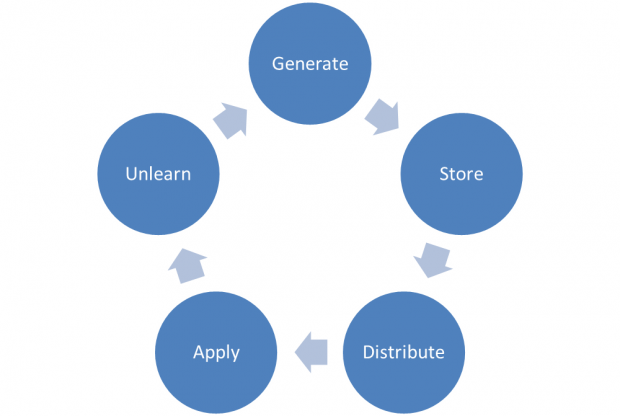
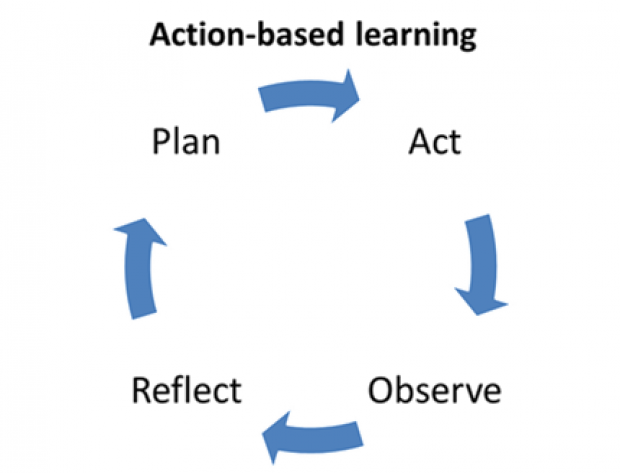
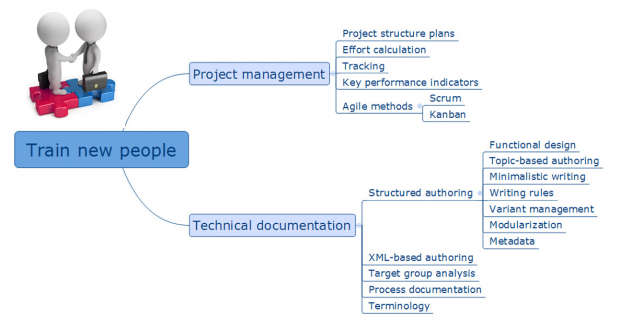
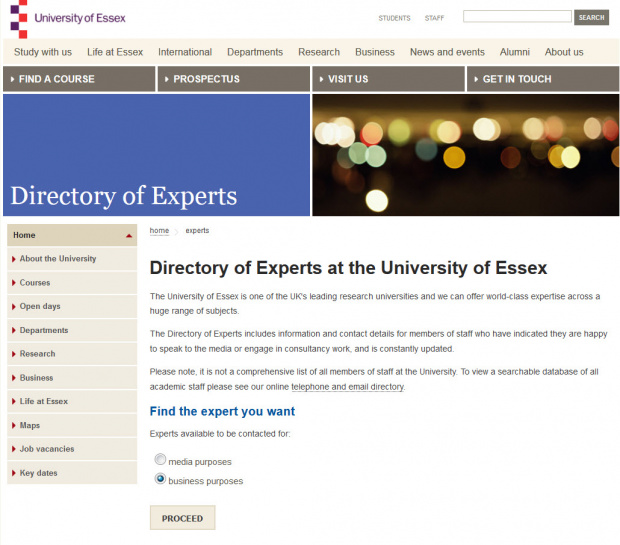
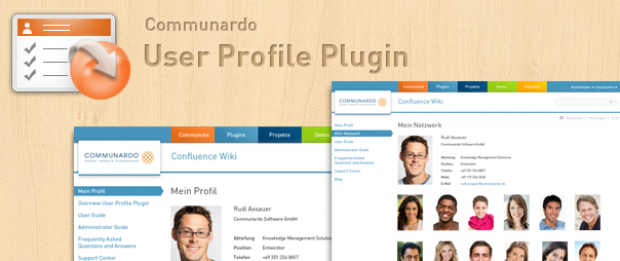
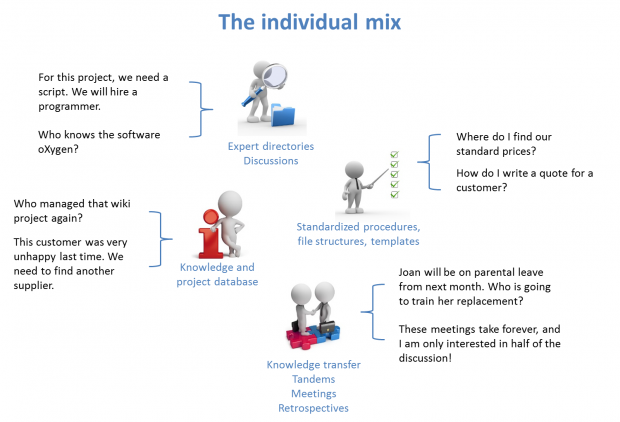
Add new comment